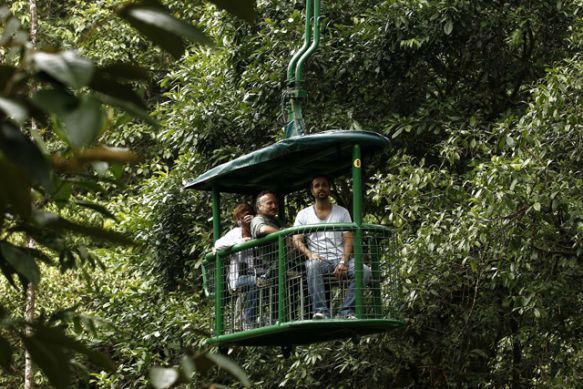The country is creating a model using its natural resources.
March 17, 2014 By Scott Johnson

 Standing on the beach at Playa Guiones, on Costa Rica’s northwest Guanacaste coastline, and looking eastward, the only thing one sees is an unbroken line of forest. There are no high-rises, no big hotels, no smog-filled taxi corridors catering to drunken tourists. Instead the trees are filled with monkeys and birds with brightly colored plumes. The only sounds are the crashing of the ocean’s waves and the thrum of forest creatures.
Standing on the beach at Playa Guiones, on Costa Rica’s northwest Guanacaste coastline, and looking eastward, the only thing one sees is an unbroken line of forest. There are no high-rises, no big hotels, no smog-filled taxi corridors catering to drunken tourists. Instead the trees are filled with monkeys and birds with brightly colored plumes. The only sounds are the crashing of the ocean’s waves and the thrum of forest creatures.
Not all of Costa Rica looks like this, but a lot of it does. According to last year’s report from the World Energy Council on global environmental sustainability, Costa Rica nabbed second place, after Switzerland, and was far ahead of Central American neighbors such as Nicaragua, which came in 88th place, or the United States, which limped in at 87th. For a tiny country like Costa Rica, which has no standing army and is surrounded by nations that have been beset by war and poverty for decades, it’s a remarkable achievement. Even more impressive is that the government has found ways to make sustainability an economically viable process for a developing nation. Continue reading here.




